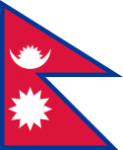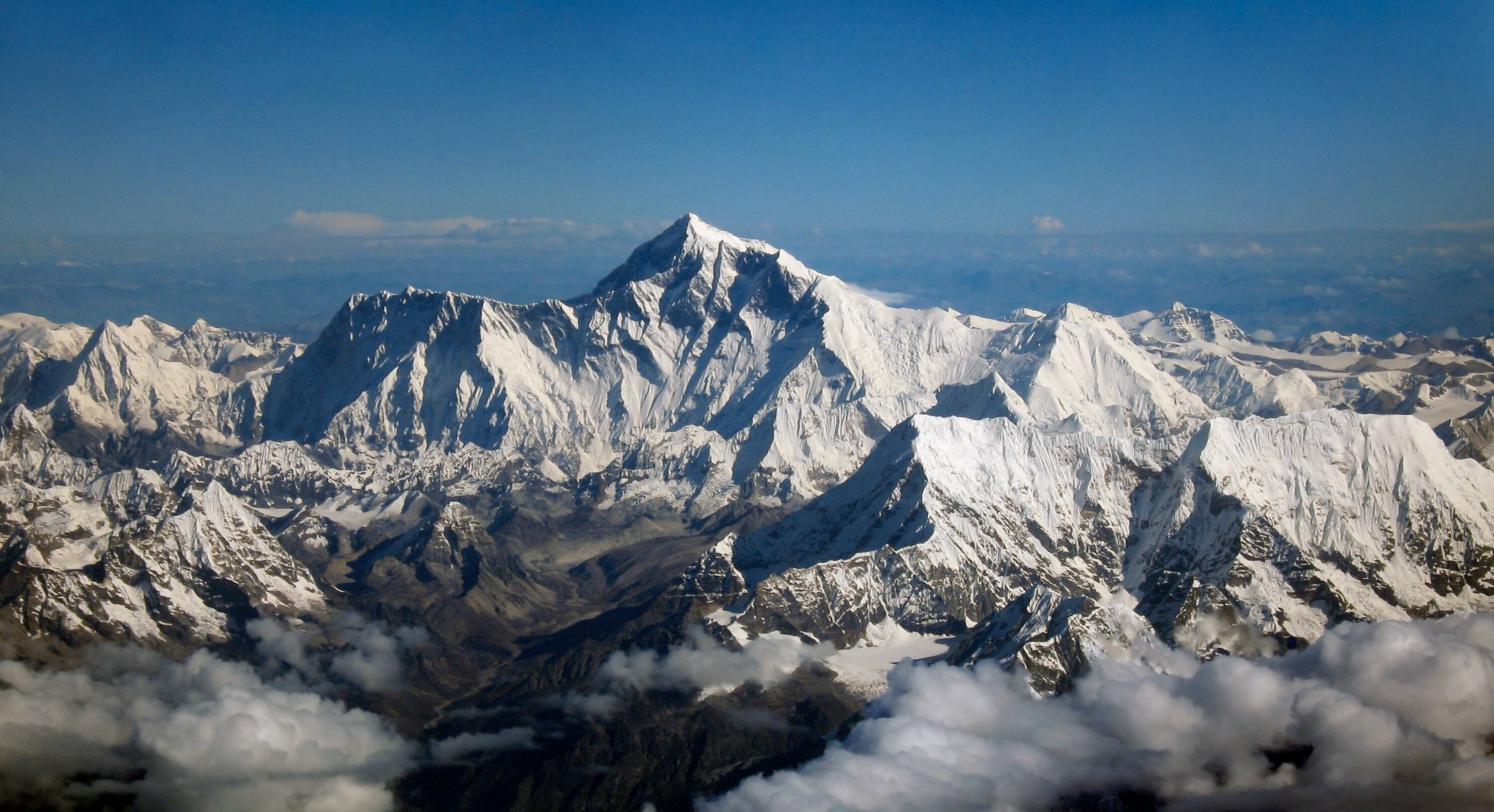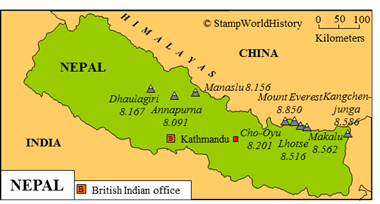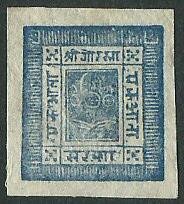नेपाल

Nepal
Quick reference
General issues: Kingdom 1881-2008, Federal democratic republic 2008-Present
Country name on general issues: Different country names in Nepali, Nepal
Currency: 1 Rupee = 16 Anna, 1 Anna = 4 Paise 1881-1907, 1 Rupee = 64 Paise 1907-1958, 1 Rupee = 100 Paise 1958-Present
Population: 3 599 000 in 1900, 27 800 000 in 2013
Political history Nepal
Nepal is located in the Himalayas in southern Asia. Current Nepal originates from the Gorkha kingdom that, in the 18th century, rapidly expanded. In the early 19th century this brings the kingdom into a conflict with British East India Company that escalates into the Anglo-Nepalese war of 1814-1816 which ends in a victory for the British. A change of rulers in the mid 19th century leads to closer ties with the British from then on. Gorkha regiments[1]Also known as Gurkha regiments. support the British in both WWI and WWII. In 1923, a treaty of ‘peace and friendship’ is signed. The name of the country is changed from Gorkha to Nepal in the 1920’s and 1930’s. After the independence of India in 1947, India and Nepal develop close relations that are formalized in a 1950 treaty between the countries. In 1955, diplomatic relations are established with China. Nepal currently has mainly good relations with its two neighbors.

Mount Everest
Internally, the king of Nepal in the mid 19th century had to cede the real power to his prime minister, who – making the position of prime minister a hereditary one – established a dynasty – the Rana dynasty – that would rule the country until 1951, the king having nominal powers only. In 1951, the Rana dynasty was set aside with Indian support. After a short period of reforms, the king dissolved the parliament thus turning Nepal into an absolute monarchy. Rising opposition led to political reforms in 1989. These reforms, however, do not satisfy Maoist groups in the country and, from 1996, Nepal suffers from civil war between royalists and Maoists. Eventually, in 2008 the monarchy is deposed, Nepal to be declared a federal democratic republic.
Nepal – as it is located in the Himalayas – has eight of the worlds ten tallest mountains within its borders. Economically, Nepal is among the less developed countries in the world, the political instability long blocking economic development.
Postal history Nepal
A first post office was opened in Nepal, after the Anglo-Nepalese war in 1816, in the newly established British residence. Post offices open to the public were setup from 1878. From 1854, stamps from British India were used. Nepal issues its first stamps in 1881. The issues, until 1930, are inscribed with the former name of the country: Gorakha or Gorkha in Nepali script. From 1930, the issues are inscribed Nepal, still in Nepali script. When Nepal joins the UPU in 1956, Nepali stamps become valid for international mail – previously international mail would be franked with Indian stamps. Also, after joining the UPU, Nepali stamps are inscribed Nepal in both Nepali and Latin script.
Album pages
← Previous page: NejdNext page: Netherlands Indies →



